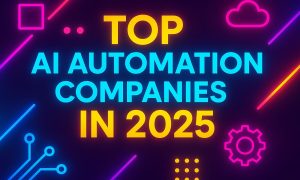

Introduction
AI agents are rapidly reshaping modern healthcare by automating clinical tasks, reducing administrative burden, and augmenting decision-making across care settings (WHO 2023). Their ability to retrieve, interpret, and act on data depends entirely on deep, secure integration with Electronic Health Record (EHR) systems such as Epic, Oracle Cerner, EMIS, and SystmOne, all of which expose standards-based interfaces for safe interoperability (HL7 2022). The following article examines the mechanisms, standards, governance frameworks, and future trajectory of AI agent–EHR integration.
1. What Are AI Agents in Clinical Settings?
AI agents are autonomous or semi-autonomous software systems capable of perceiving context, retrieving structured clinical data, executing tasks, and interacting with clinicians through natural interfaces (Topol Review 2019). These agents range from ambient documentation systems to triage algorithms and digital clinical assistants, all requiring secure access to patient records to function effectively (NHS England 2023). In modern health IT ecosystems, agents typically operate as workflow-embedded microservices adhering to FHIR, SMART on FHIR, and CDS Hooks standards (HL7 2023).
2. Why EHR Integration Is Essential for AI-Driven Automation
EHR integration provides the structured data pipeline enabling AI agents to perform accurate reasoning, documentation, alerting, and orchestration of clinical workflows (ONC 2022). Without real-time access to diagnoses, medications, vitals, notes, and scheduling data, automation becomes unsafe or impossible (MHRA 2023). For example, ambient scribing tools require permission to retrieve encounter metadata, and triage agents rely on longitudinal healthcare histories to generate risk-stratified recommendations (JAMA 2023).
3. Integration Pathways for Epic
Epic provides one of the richest interoperability ecosystems, allowing AI agents to embed within clinical workflows using open standards and proprietary extensions (Epic 2024).
3.1 FHIR APIs
Epic’s FHIR R4 APIs allow agents to access demographics, encounters, labs, medications, and notes using RESTful calls secured with OAuth2 (HL7 2022). These endpoints are commonly used for conversational or decision-support agents.
3.2 App Orchard / Epic Vendor Services
Epic’s App Orchard (now “Epic Showroom”) provides official developer access, sandbox environments, and testing frameworks for integrating artificial intelligence automations (Epic 2024). Agents can retrieve structured data, write documentation, or trigger workflow actions.
3.3 SMART on FHIR
SMART on FHIR enables agents to launch within the Epic Hyperspace or Haiku/Canto mobile apps as context-aware widgets (SMART Project 2022). This allows real-time clinical data retrieval and secure single sign-on.
3.4 CDS Hooks
Epic supports CDS Hooks for agents that deliver actionable insights—such as order suggestions or risk alerts—into workflow events like “order-select” or “encounter-open” (HL7 CDS Hooks 2022).
3.5 Ambient Listening Integrations
Ambient AI documentation solutions integrate via encounter and note APIs, often using Epic’s “Ambient Listening” collaboration models (Epic 2024).
4. Integration Pathways for Oracle Cerner
Oracle Cerner offers an extensive set of interoperability frameworks enabling cross-system AI automation (Oracle Cerner 2023).
4.1 FHIR R4 APIs & Cerner Ignite
Cerner Ignite APIs support SMART on FHIR applications, enabling agents to authenticate, retrieve patient context, and launch embedded clinical tools through Cerner Millennium workflows (ONC 2022).
4.2 Cerner HealtheIntent
HealtheIntent provides population-level data aggregation, allowing predictive and risk-stratification AI agents to operate across multi-EHR environments (Cerner 2023).
4.3 CDS Hooks
Cerner supports CDS Hooks events for context-triggered decision support, enabling cross-vendor integration using HL7 standards (HL7 CDS Hooks 2022).
5. Integration Pathways for EMIS and SystmOne
Across NHS primary care, EMIS and SystmOne expose interoperability interfaces built around national standards (NHS England 2023).
5.1 NHS Interoperability Toolkit (ITK)
ITK provides structured messaging frameworks allowing AI agents to send and receive clinical documents, tasks, and notifications (NHS Digital 2021).
5.2 GP Connect
GP Connect enables read and write access—including appointment management and record viewing—allowing artificial intelligence automations to integrate with GP workflows (NHS England 2023).
5.3 IM1 / IM1 Pairing
IM1 provides controlled partner integration for digital tools, enabling direct interoperability with EMIS and SystmOne (NHS Digital 2021).
5.4 NHS Spine
Through Spine, agents can authenticate and access national datasets such as PDS, SCR, and eRS, essential for agent-driven documentation or triage (NHS Spine 2022).
5.5 FHIR R4
Both EMIS and SystmOne are migrating toward FHIR-based APIs mandated by NHS England for future healthcare interoperability (NHS England 2022).
6. Core Interoperability Standards
Integration relies on adherence to HL7 and modern AI interoperability standards:
-
FHIR R4 – structured RESTful clinical resources (HL7 2022)
-
HL7 v2 – legacy messaging still dominant in labs and ADT (HL7 2022)
-
SMART on FHIR – app-launch and OAuth2 framework (SMART Project 2022)
-
CDS Hooks – workflow-triggered decision support (HL7 2022)
-
OAuth2 / OpenID Connect – secure authentication for AI agents (OIDF 2023)
7. Key Challenges in AI–EHR Integration
Successful integration requires addressing technical and governance risks.
-
Data governance and IG: Compliance with UK DSPT, Caldicott principles, and GDPR is mandatory (NHS England 2023).
-
Safety and clinical risk: Agents must comply with MHRA SaMD guidance and AAMI/ISO AI safety frameworks (MHRA 2023).
-
API rate limits: Vendors impose throttling to protect operational performance (Epic 2024).
-
Auditability: Agents must provide complete audit trails for each action (ONC 2022).
-
Latency: Low API latency is essential for real-time ambient AI use cases (JAMIA 2022).
8. UK-Specific Regulatory Considerations
Deploying artificial intelligence in UK healthcare settings requires compliance with:
-
NHS DTAC – digital and AI technology assessment for safety and interoperability (NHS England 2021)
-
NHS England FHIR mandates – specifying FHIR R4 as the strategic interoperability standard (NHS England 2022)
-
MHRA AI guidance – evolving regulation for adaptive AI SaMD (MHRA 2023)
-
NICE evidence standards – evaluating safety and effectiveness of digital health technologies (NICE 2022)
9. Best Practices for Deploying AI Agents in Clinical Workflows
-
Use standards-first design built around FHIR, SMART, CDS Hooks (HL7 2023).
-
Minimise data movement, favouring in-place processing where possible (NHS England 2023).
-
Ensure human-in-the-loop oversight for all autonomous actions (MHRA 2023).
-
Implement robust monitoring, including performance, errors, and drift detection (NICE 2022).
-
Perform end-to-end clinical safety assessments under DCB0129/0160 (NHS England 2021).
10. Future Outlook: Autonomous Workflows and Cross-Vendor Interoperability
The next decade will see AI agents increasingly orchestrating multistep workflows—triage, documentation, ordering, referrals—across multiple EHRs through fully standardised FHIR-native integrations (ONC 2024). As vendors converge on open APIs, autonomous decision-support systems will become embedded into frontline healthcare, enabling safer, higher-quality, and more efficient care delivery (WHO 2023).
Frequently Asked Questions (FAQs)
1. Do AI agents require separate NHS approvals?
Yes—solutions must meet DTAC requirements and follow MHRA SaMD guidance.
2. Can AI agents write data back into EHRs?
Yes, if granted appropriate permissions via FHIR write operations or vendor-specific workflows.
3. Are Epic and Cerner open platforms?
Both support open standards (FHIR, SMART), though integration still requires vendor onboarding.
4. How do agents ensure data security?
Authentication typically uses OAuth2, with strict audit trails and role-based access.
5. Are UK GP systems moving to FHIR?
Yes—NHS England mandates increasing use of FHIR R4 for primary-care interoperability.
References:
1. Epic Systems – Interoperability & FHIR Documentation (2024)
https://www.epic.com/interoperability
2. HL7 International – FHIR R4 Standard
https://www.hl7.org/fhir/
3. HL7 International – CDS Hooks Specification
https://cds-hooks.hl7.org/
4. SMART on FHIR – Official Framework Documentation
https://smarthealthit.org/
5. Oracle Cerner – Ignite APIs for Millennium (FHIR + SMART)
https://docs.oracle.com/en/industries/health/millennium/
6. Oracle Cerner – HealtheIntent Population Health Platform
https://www.oracle.com/health/healthcare-platforms/healtheintent/
7. NHS England – Interoperability Standards & FHIR Roadmap
https://www.england.nhs.uk/digitaltechnology/standards/
8. NHS Digital (now NHS England) – GP Connect Specification
https://digital.nhs.uk/services/gp-connect
9. NHS Digital – Interoperability Toolkit (ITK) Documentation
https://digital.nhs.uk/services/interoperability-toolkit
10. NHS Spine – National Services Overview
https://digital.nhs.uk/services/spine
11. NHS DTAC – Digital Technology Assessment Criteria
https://www.england.nhs.uk/digitaltechnology/dtac/
12. MHRA – Software and AI as a Medical Device Guidance (2023)
https://www.gov.uk/government/publications/software-and-ai-as-a-medical-device/guidance-on-software-ai-as-a-medical-device
13. NICE – Evidence Standards Framework for Digital Health Tech
https://www.nice.org.uk/about/what-we-do/digital-health
14. WHO – Ethics and Governance of Artificial Intelligence for Health
https://www.who.int/publications/i/item/9789240029200
15. ONC – Interoperability Standards Advisory (U.S.)
https://www.healthit.gov/isa/
16. Topol Review – Preparing the Healthcare Workforce for the Age of AI
https://topol.hee.nhs.uk/
17. JAMA – Studies on AI Integration in Clinical Workflows
https://jamanetwork.com/journals/jama
18. JAMIA – Research on EHR Interoperability and AI
https://academic.oup.com/jamia























